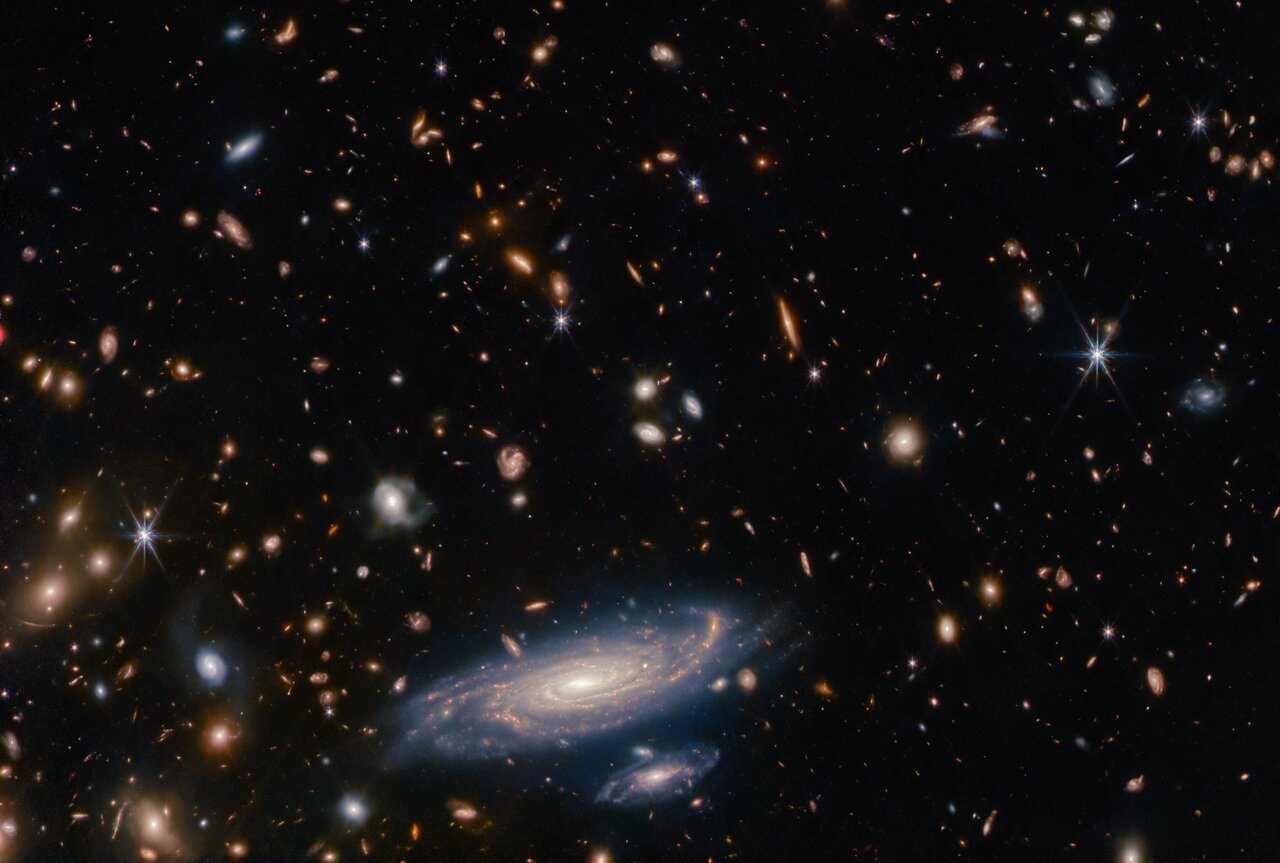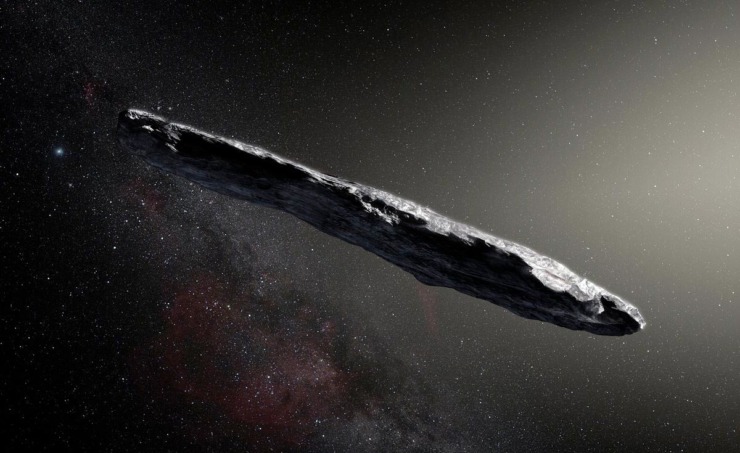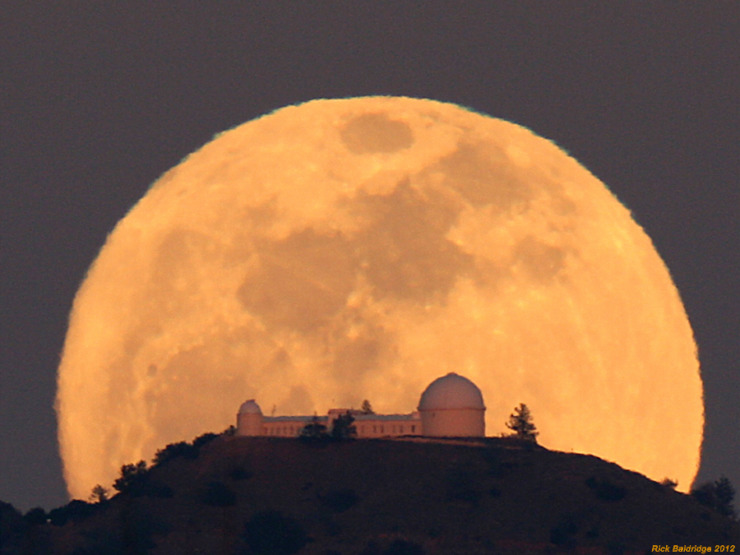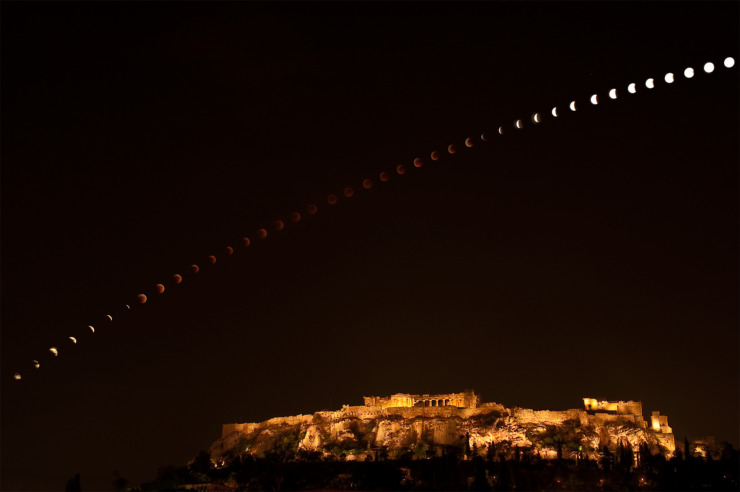(And A New Science Fiction Story)
Here is a new image that the James Webb Space Telescope people designated their “Image of the Month.” We are looking in the direction of the constellation of Hercules, and we see one large spiral-shaped galaxy toward the bottom which is just a little more than a billion (thousand million) lightyears away! At that distance, it doesn’t have a name, but only a catalog number. But what’s amazing about the picture is what ELSE we see.
Only two of the objects we see are stars — you can find them because they have little spikes coming out of them in all directions (as a result of the way the light moves through the optical elements of the telescope.) Everything else you see is a galaxy — a collection of billions of stars (and planets and cosmic raw material.) Astronomers looking at the full image have counted thousands of such galaxies. Roughly, the smaller a galaxy looks, the further away it is.
This is what the JWST has been built to do — to give us sharper, more detailed images of the distant universe than we have ever had before. And because the further away a galaxy is, the longer light takes to reach us, we are seeing these smaller galaxies as they were billions of years ago. Remarkably, this image wasn’t even taken to examine galaxies, but merely to help calibrate some of the telescope’s instruments.
Just left-click on the image to open it larger in your computer browser and then let your eyes roam over the beautiful galaxies, many of them disk (or frisbee) shaped, like our own Milky Way Galaxy. In how many have the stars given birth to planets like the Earth?
Speaking of the possibility of other planets and other life, I am tickled to report that another of my science-fiction stories was published recently on line, in Wyldblood Magazine. It was inspired by the discovery, in 2017, of the first confirmed “visitor” to our solar system — an object from the realm of the other stars.
You can read the story at: https://wyldblood.com/the-listener-between-worlds/
When the motion of the object (thought to be a comet or asteroid) was measured, it didn’t just fall around the Sun and go back out, it had an extra acceleration. Most astronomers looked to natural explanations for this additional motion (such as a jet of gas expelled from a comet as it got near the Sun.) But a few suggested that perhaps we were seeing a large alien probe, with steering capabilities.
My (short) story takes off from there, plus the notion that any AI an advanced civilization puts on board such a probe might be capable of some interesting thinking. (For those of you who are opera fans, you may catch a little resemblance to the ending of “Das Rheingold,” but you can still enjoy the story of you hate opera. :-))
All my published stories can be found at: https://www.fraknoi.com/science-fiction-with-good-astronomy/




